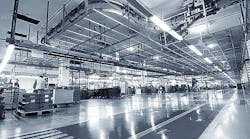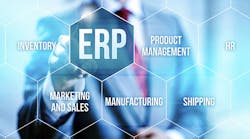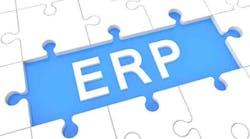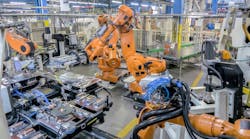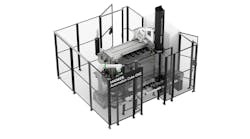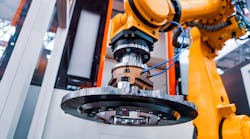Lean manufacturing, which originated as the Toyota Production System, is one of the most well-known process strategies in modern manufacturing. It migrated to the U.S. in the 1950s and began to draw serious attention in the 1980s. Since then, it has become the industry’s default best-practice approach and has been widely adopted in manufacturing facilities worldwide. But where does lean stand today? Have new technologies made lean irrelevant? Have the retiring Baby Boomers, yesterday’s lean pioneers, taken the secrets of lean success with them into retirement?
Lean manufacturing has two main building blocks: reducing waste and creating customer value. Continuous improvement is the ultimate goal. To achieve this, manufacturers strive to eliminate information silos and, instead, optimize the flow of products and services through the entire value stream—across departments, processes and equipment to customers.
Lean became synonymous with modern manufacturing until economics derailed the transformation journey for some companies. As the world economy plunged into recession in 2009, manufacturers were forced to cut back on spending and use of resources, covering only the bare necessities. While this eliminated every bit of excess, it also tended to eliminate the proactive continuous improvement projects that were part of the early lean initiatives. Projects that required investment in training, upgrades in equipment or investment in technology were often put on hold.
Today, lean processes are still at the heart of most manufacturing operations worldwide and are increasingly important in other industry sectors, including distribution and financial services. As the manufacturing industry recovers from the recession and moves into a growth phase, analysts are starting to once again pick up the lean dialogue, as though it simply had been paused. In response, managers are starting to review their original lean strategies in light of today’s changing market demands. Some are asking, “Is lean still relevant?” Others wonder, “How does a lean enterprise also embrace investment in new technologies like 3D printing and the Internet of Things (IoT)?”
The manufacturing industry has changed dramatically since lean principles were first adopted, especially in the areas of manufacturing technology and information management. When many companies first rolled out their lean initiatives, the Internet was in its infancy and few could imagine a workplace that included use of mobile devices, online portals for customers and suppliers and real time collaboration with suppliers in other continents. It’s a quickly evolving global market place today with highly demanding customers. How do lean principles hold up to this new paradigm?
Since the early days of lean adoption, IT managers and production managers have often clashed as they struggled to find the balance between big powerful ERP systems and streamlined minimalist processes with as few steps as possible. The monolithic ERP systems that tried to impose a one-size fits all structure were not always lean compatible.
Today the manufacturer must, above all, be able to connect customer needs with a company’s ability to deliver a product—on demand. Multiple tactics and tools are required to make on demand manufacturing feasible—and profitable—from product configuration solutions to component subassemblies, co-manufacturing partnerships and late-stage assembly strategies. Modern ERP solutions bring these tactics and tools together into one streamlined process flow. Today, the highly flexible ERP system acts as the central nervous system, connecting process flows and making a lean philosophy attainable.
Updating concepts for current drivers
To remain relevant, a business philosophy can’t operate in a vacuum. Manufacturers, technology and the manufacturing workforce have all evolved. It seems logical that lean principles, too, must evolve.
Data management is one critical aspect that requires a fresh perspective. Since many of the early guides on lean concepts were written, big data technology has transformed reporting and analytics dramatically. Now, data can be used to predict market demands, rather than just report on historical transaction trends. Reporting tools are also easier to use, bringing key performance indicator (KPI) tracking to users throughout the organization. Users no longer need the help of the IT team to simply obtain a performance report. This ease of use brings a new challenge, though, over reporting and data deluge. Here is where the lean guidelines for “keeping processes simple” can help managers control the temptation to over-analyze.
Just-in-time inventory concepts, part of the lean philosophy, also need a refresher. Expectations over delivery dates have escalated greatly. In 1990, a six month delivery wait may have been tolerated; today, in some industries, six days or six hours may be too slow. Just as expectations have drastically changed, capabilities and best practices have kept pace. Raw materials can be shipped faster, received sooner, and put into the production value chain with remarkable speed, reducing even further the need to inventory raw materials. Even an extended, global supply chain can respond with great agility. This doesn’t mean lean principles can be ignored by warehouse managers. On the contrary, it is more important than ever to manage the complexity, minimize steps and optimize resources.
Shop floor scheduling is the next area that requires a new chapter in the lean manual. Early lean consultants didn’t address technologies, such as 3D printing, smart sensors, and IoT, for one important reason: these concepts were little more than visions and prototypes when the Toyota Production System drifted westward. Can manufacturers reconcile disruptive innovations and lean efficiency? How can a manufacturer balance innovation, which brings some natural waste as ideas are tried and discarded, with the lean mandate to minimize waste? On the surface, the two precepts seem incompatible.
Bringing lean to a new generation
Manufacturers must strive to overcome this fallacy. Innovation can’t be curtailed, as it brings the next generation breakthroughs that will continue to inspire growth and investment. Disruptive technology brings some degree of “waste” as new systems and workflows continue to be refined, until best practices are reached. Manufacturers are still on the upward slope of the learning curve, as they work to establish new best practices for on demand scheduling and “printing” needed components, rather than manufacturing them. Lean concepts can be used to guide the workflows and keep waste in check, without totally restricting some tolerance for the trial and error and experimentation that come with any new approach.
A look back at lean’s history’s and lean’s future comes at an opportune time, as many of the early adopters of lean transformation projects are reaching retirement age. U.S. census reports indicate 10,000 manufacturing workers reach retirement age every day. These retirees may include the managers and their production crews who sat through the eye-opening training sessions in the 1980s as words like kaizen and kanban still sounded so strange.
Now, a new generation of manufacturing personnel is being introduced to the lean vocabulary and striving to put the lean concepts in context for their jobs, their roles and their priorities. This isn’t always easy, but it’s certainly necessary.
The lean manufacturing philosophy is so import, so entrenched in manufacturing today that it isn’t going away completely. It’s time to polish up some of the lean concepts and recognize that they are still relevant and still valuable to manufacturing.
Larry Korak is the Director of Industry Strategy Direction, Industrial Manufacturing at Infor, a developer of enterprise software ranging from financial systems and resource planning to supply chain and customer relationships.
